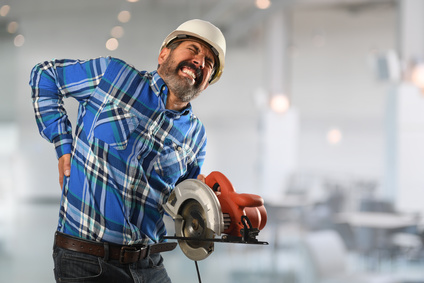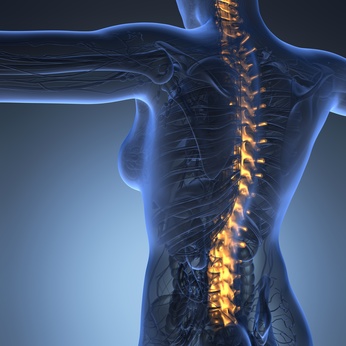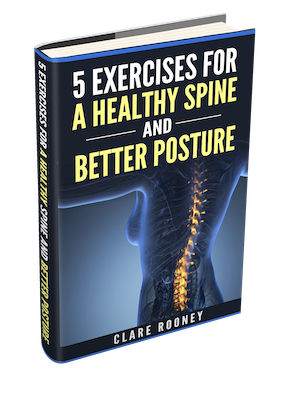The Corrective Process: What you need to understand if you have Back Pain.

Your Over-Stimulated Nervous System
September 18, 2017
Know Your Essential Fats
February 16, 2018The Corrective Process: What you need to understand if you have Back Pain.

Senior Hispanic worker suffering back injury inside building
Millions of people suffer from low back pain (LBP) worldwide. In fact it has been cited as the single leading cause of disability worldwide:
“Out of all 291 conditions studied in the Global Burden of Disease 2010 Study, LBP ranked highest in terms of disability”
Global Burden of Disease 2010 study
In the United States alone it is estimated that $50 Billion is spent annually on back pain.
It is also estimated that 80% of the population will experience a back problem at some point in their lives.
Having had serious problems with my own back health (I was off work for a full year at the age of 26 with serious spinal issues). I made it my mission to solve my own challenges and assist others in doing the same.
I was able to bring myself back to full function (and set national records in Olympic lifting in the process!) from what I learned through my studies.
My research involved studying with leading Rehabilitation experts ( Paul Chek, Dr Stewart McGill),a top Olympic Strength Coach ( Charles Poliquin) and Studying and Training in Pilates with Polestar Pilates founded by Brent Anderson Doctor of Physiotherapy and Orthopaedic Certified Specialist. During this time I also did multiple trainings in Nutrition and Holistic Healing modalities.
What I have found in healing myself and working with 100s of clients over the last 14 years since I started my practice is that a holistic approach is needed to overcome Back Pain for good. Healing Back Pain is a process and not a onetime event. It requires adjustments to lifestyle that are permanent and progressive.
Where should you begin?
Having assessed 100s of clients Bio-Mechanically over the last 14 years I can honestly say that there are no two bodies that are the same. The origin of each individuals back problem is like a puzzle that has to be solved. The starting point to solving this problem is finding out what is going on in the clients body right now.
What is their posture like? Are they swaying forward or back? Favouring one leg more than the other? Where is their head in space? Poking forward or tilted to one side? For more on this topic read my blog Is Your Body in Alignment
What is their flexibility like? What is going on in the hips? Are the muscles that cross the front of the hip tight? Are the muscles that cross the back of the hip tight? And more importantly WHY ARE THOSE MUSCLES TIGHT? Some muscles are tight because we adopt postures throughout the day that keeps them in a shortened position. Some are tight because they are glaringly weak and struggling to generate force and strength in a healthy organic way.
What is the strength of differing muscle groups like? Are some muscle groups dominating and inhibiting others? Are some muscle groups weak because they never get the appropriate training stimulus that allows them to function based on what they were designed to do? If a muscle is primarily designed to generate a lot of power and strength and it is only ever trained in an endurance capacity (or not at all) then it will be dysfunctional. If even just one muscle group is dysfunctional the whole system is thrown into a state of compromise. The longer this is allowed to continue the more compensatory patterns emerge.
What is the person’s movement strategy? A movement strategy is like a software program. Each movement pattern has its own software program. When you deadlift do you pull most of the work out of your lower back? Is your body over utilising your psoas muscle in an attempt to generate lumbar stability because your buttocks and abdominals are not integrating optimally?
Corrective Exercise
Once you have been assessed the starting point for correction can begin. This will usually include corrective stretches and mobilisations and corrective strengthening exercises. You have to be able to recruit your buttocks (for example) in simple patterns before you can expect them to integrate in much more complex patterns. So while squatting can be a great exercise for your glutes (buttocks) if you can’t fire them in a simple movement pattern they sure as hell aren’t going to fire in a movement pattern as complex as a squat just because you decided to do that exercise. Again to take the buttocks as an example they must be able to fire in multiple planes of motion; laying on your back, using them to externally rotate your hip, laying on your tummy (e.g. reverse hyper) , using them as hip extensors in concert with fluid integration with other muscles in the chain of movement e.g. squatting.
Some planes of motion are more complex to master than others for a given muscle group. Keeping your abdominal wall firing and integrating properly when your spine is fully extended is much more difficult than making it fire in a shortened flexed position. Doing exercises laying on your back or side is way easier than doing an exercise in what I call the upright Universe standing on your feet and locomoting through space. The goal is to get that full functionality in the upright Universe as this is where life happens for the most part and this is also the place we get injured. We rarely (if you have an existing back problem) start in this upright Universe. You must master patterns at a more foundational level, isolating muscles then reintegrating them into more and more complex patterns.
So my point is that corrective exercise is a process. You will unlikely get full functionality after one corrective exercise program. How long it takes depends on a number of factors.
What is your age?
The older you are the more likely you have engrained these dysfunctional patterns in your body.
How long have you had the problem?
Pain is the master programmer of your nervous system. The longer you have been in pain, the longer you have left it on the long finger to address, the more this pain programs dysfunction and compensation into your system.
How much physical demand do you have in your day?
If you are working on a building site lifting heavy or awkward objects and you are struggling with your back it’s highly unlikely that you are using excellent movement strategy (software programs) to perform these actions. Every time you lift something incorrectly then you hardwire your dysfunctional patterns even further!
How much stress do you have in your life?
The more overall stress you have in your life, not just physical but including Mental and Emotional stress the harder it is for your body to heal. In order to heal your body must get into a parasympathetic state with respect to your nervous system. This is the rest digest and repair mode of your nervous system and I wrote about it in my blog Your Over-Stimulated Nervous System.
What is the quality of your nutrition like?
Guess what your muscles, bones and connective tissues are made from? In a nutshell from the raw materials you give your body every day in the form of food. So if you are eating a highly refined processed diet don’t expect your body to turn trash into treasure, to turn that rubbish quality food into healthy robust muscles, tendons, ligaments and bones. If your protein intake is low, of poor quality or only plant based protein again you make it more challenging to heal. I was listening to a podcast recently from a scientific researcher who stated that you have to eat DOUBLE the amount of plant based protein relative to animal based protein to simulate tissue growth and repair. Now that’s something to chew on……
Are you optimally Hydrated ?
Your spinal discs require optimal hydration to remain healthy. The load bearing capacities of the spine are critically linked with healthy disc function. Your cartilage is dependent on optimal hydration. Many people have back pain as they are simply dehydrated. Remember if you are thirsty you are already dehydrated.
Are you prepared to commit to an exercise program?
Most individuals with and existing back problem will need to commit to exercising at least 3 times a week consistently for about 30-60 minutes at a time. You will need to make peace with the fact that regular exercise is THE SINGLE MOST IMPORTANT part of your recovery. You also want to stay healthy and walk far, far away from that back issue by building more resilience in your system with greater levels of strength and movement intelligence. Getting out of pain is like taking one step back from the edge of a cliff. What you really need is to get as far away from the edge of that cliff as possible. This is your buffer zone for stress. The greater your buffer zone the less your chances of re-injury. If you are lacking the motivation to exercise yourself then hire a good trainer to take you through your paces. This person should be passionate about exercise and highly qualified in the arena of corrective exercise.
Will Surgery fix my problem?
In over 90% of cases the emphatic answer is No. Surgery is used as a last resort if there is severe nerve entrapment causing atrophy or muscle wasting. For the vast majority of people their back problems are emanating from weakness of muscles, lack of flexibility, not enough exercise or the wrong type of exercise. No amount of surgery can train the body how to move and stabilise itself intelligently.
Will Chiropractic/Osteopathy fix my problem?
Again if the origin of your back problem is weakness of muscle groups, lack of flexibility and lack of intelligent movement strategy (as it is in 90% of cases) a chiropractic adjustment will not train your body how to be strong, stable and move intelligently. If you have a nerve root impingement a chiropractic adjustment can free up a nerve pathway and make your exercise performance better.
In order to heal your back pain you need to make peace with the fact that you have to do 90% of the work yourself using Exercise, Healthy Nutrition, Hydration, Quality Sleep and Stress Management as your primary weapons.
Adjunctive therapies like Chiropractic, Osteopathy, Acupuncture and Massage are just that…adjunctive. They can assist and support your primary work but never replace it. They should make up 10% of your approach to back care. The vast majority of people with back pain look to these therapies to get 100% results. This would be like expecting a multivitamin tablet to give you health and weigh loss in spite of eating unhealthily and not exercising.
So there you have it folks. The truth can be a bitter pill to swallow but best to take it now than to suffer for years. The solution to your back problem is already here. We are not waiting for it to be invented. Get properly assessed from a Corrective exercise specialist who knows how to progress you fully from foundational floor exercises all the way up to those Upright Universe exercises like squats, lunges, dead-lifts and the like.
Make peace with the fact that exercise needs to be part of your weekly routine and heck, you might even start to enjoy it! Exercise is a powerful stress reliever, it slows the aging process, it helps optimise your body composition burning fat and building muscle, you sleep better when you exercise and you are more motivated to eat in a healthy way. It’s a win, win situation and one of the most bang for the buck modalities we have in the quest for health and happiness.
For more information on Bio-Mechanical Assessment, Online Pilates Training and Nutrition and Lifestyle coaching and Online Personal Training ( A Bio-Mechanical Assessment is Included in your Online Personal Training Starter Package) click the links.
To Subscribe to my email list click here.
To subscribe to my You tube channel click here.




